Posted October 31, 2025 by Tiffany Lee
In case you missed these stories highlighting research and creative activity at the University of Nebraska-Lincoln, the Office of Research and Innovation’s communications team has compiled a roundup of some top research stories from research.unl.edu and other sources.
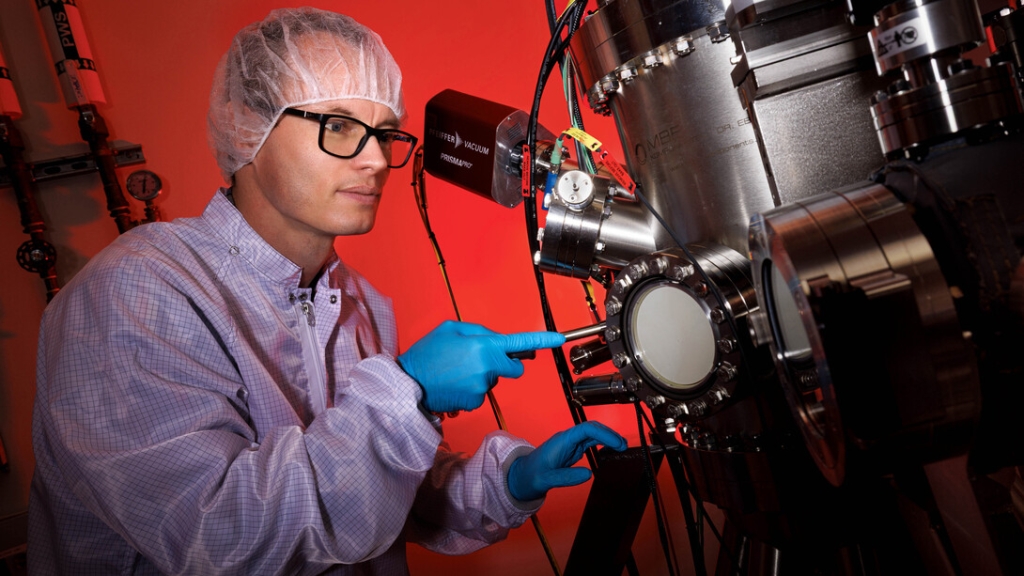
Husker physicist studying how disordered materials may advance microelectronics
Who: Robert Streubel, assistant professor of physics and astronomy
What: With a five-year, $849,399 grant from the National Science Foundation’s Faculty Early Career Development Program, Streubel’s team will study how disordered, noncrystalline materials could be used to create better, faster and more energy-efficient electronic devices. The CAREER project will focus on amorphous magnetic materials that lack the regular atomic structure of crystals, offering the potential for greater manipulation and versatility. These materials could be advantageous for emerging technologies like physical reservoir computing, which mimics the human brain through energy-efficient electrical and photonic physical networks to power AI. The team will also host educational workshops for high schoolers with the goal of increasing participation in STEM through visual storytelling.
“This work could fundamentally shift how we think about disorder in materials,” Streubel said. “Instead of being a limitation, disorder might actually be the key to unlocking new functionalities.”
Writer: Dan Moser, Office of Research and Innovation
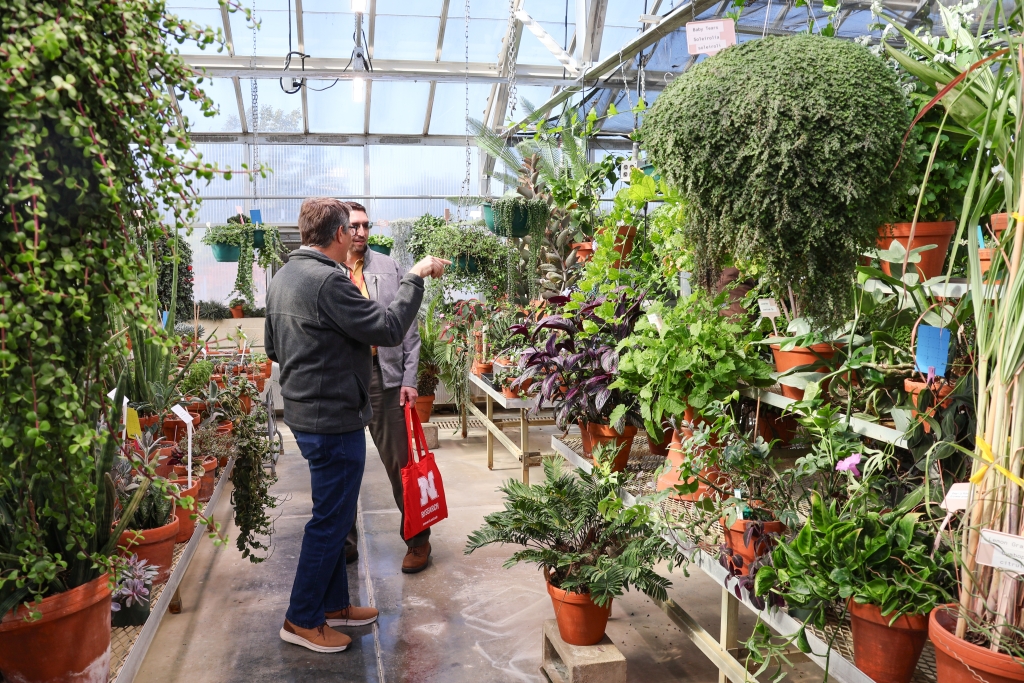
Showcase brings community leaders to campus to explore research partnerships
Who: Office of Research and Innovation; community leaders and partners from education, nonprofit organizations, government and business
What: The university’s first-ever Research and Innovation Showcase enabled several dozen guests from the community to tour facilities and laboratories, learn about key research areas, hear lightning talks from researchers and network with faculty and each other. Visitors toured a diverse range of facilities, including the Beadle Center, the Nebraska Center for Materials and Nanoscience, Nebraska Innovation Studio and more. At each site, faculty and staff provided briefings and answered questions. Participants were impressed by the showcase, noting that it was an important avenue for members of industry to discover university partners and identify areas of collaboration.
“The leadership team in the Office of Research and Innovation has dreamed about hosting an event like this for a long time: the chance to open our doors for community leaders to visit our academic and research facilities and meet the talented and dedicated people who make big things happen,” said Jen Nelson, interim vice chancellor for research and innovation.
Writer: Dan Moser, Office of Research and Innovation
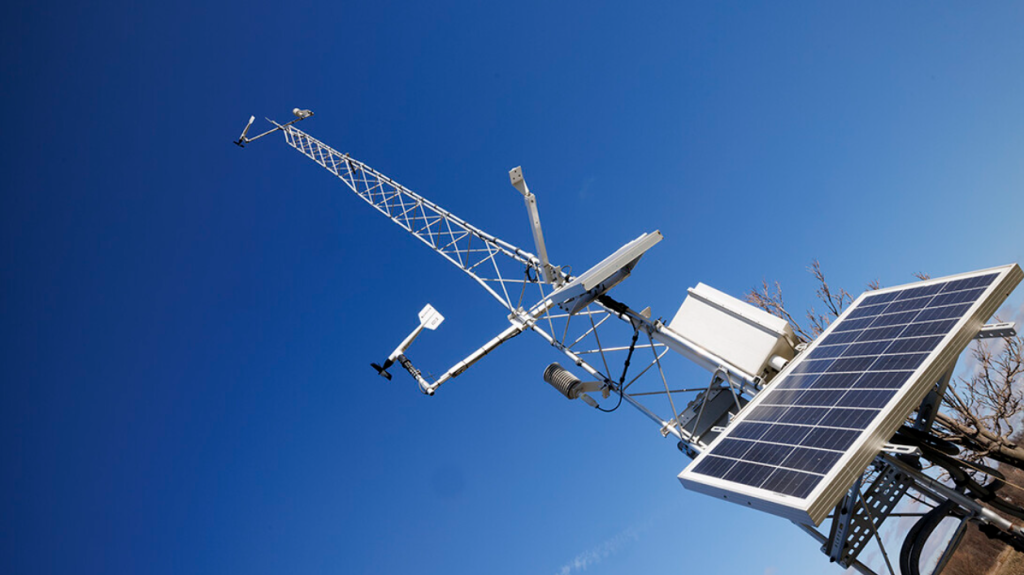
Funding allows expansion of Nebraska Mesonet
Who: Nebraska Mesonet
What: The university added 21 stations to the Nebraska Mesonet network this year through $1.48 million in funding from the U.S. Army Corps of Engineers, the U.S. Department of Agriculture’s Farm Service Agency, and Lower Loup and Upper Elkhorn Natural Resources Districts. The addition increases the state’s number of stations to 94, and Nebraska Mesonet director Ruben Behnke said he aims to boost that to 200 in the next few years to provide more comprehensive data to farmers and decision-makers in Nebraska. The mesonet is a network of automated weather stations that collect high-quality environmental and climatic data across the state. The primary users are farmers, who use the data to make decisions about irrigation and timing for planting, spraying and harvesting. Other users include governmental agencies like the Nebraska Forest Service and the Nebraska Emergency Management Agency.
“To properly cover the state, you need a relatively dense network,” Behnke said. “Otherwise, you’re providing data that’s not appropriate to people who are trying to put water on their crops. Even more financially important is applying for financial disaster relief through the Farm Service Agency for drought, flood, hail or other disasters.”
Writer: Ronica Stromberg, School of Natural Resources
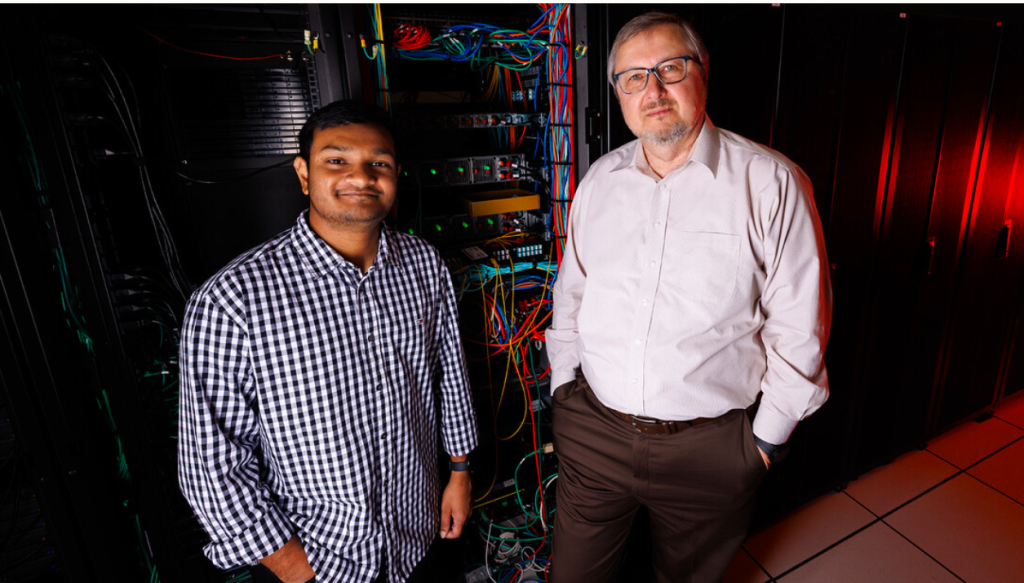
Advanced materials research is first Nebraska-led project to earn prestigious NSF award
Who: Evgeny Tsymbal, George Holmes Distinguished Professor of physics; Naafis Ahnaf Shahed, graduate student, physics and astronomy
What: With a $2 million grant from the National Science Foundation, Tsymbal will lead a team of researchers looking to optimize advanced materials to create better and faster technology. Tsymbal’s team is the first Nebraska-led project to be selected for NSF’s Designing Materials to Revolutionize and Engineer our Future program, which funded 25 projects that focus on getting advanced materials to market quickly and cheaply. Tsymbal’s efforts center on enhancing the properties of oxide materials through a phenomenon known as moiré patterning, in which two flat materials are layered over one another with one of the materials at an angle, resulting in new patterns and properties. This work is part of the university’s broad focus on emerging quantum materials, which also includes the EQUATE collaboration, an initiative aimed at understanding materials at the atomic level.
“The practical significance of oxides lies in their potential to drive advances in energy-efficient information technologies, enable next-generation sensing and energy devices and serve as a foundation for emergent quantum technologies,” Tsymbal said.
Writer: Leslie Reed, University Communication and Marketing

Grant expands Trauma-Capable Schools program to rural Nebraska
Who: Cheryl Turner, training specialist, Center on Children, Families and the Law; Halley Kruse, Women Investing in Nebraska grants chair
What: Women Investing in Nebraska awarded UNL’s Trauma-Capable Schools training program a $147,909 grant during WIN’s annual awards ceremony on Oct. 9. Lincoln Public Schools and UNL’s Center on Children, Families and the Law collaborated to establish the program in 2019 to provide school personnel with a six-course, self-paced online training in trauma-informed practices. The training helps educators address the effects of adverse childhood experiences such as abuse, poverty and family instability – all of which can disrupt learning and development. The WIN grant will allow the program to expand to rural Nebraska, empowering more educators to create sustainable learning environments for both students and teachers.
“Receiving the Women Investing in Nebraska grant is a transformative moment for our Building Trauma-Capable Schools initiative,” Turner said. “The UNL Center on Children, Families and the Law is deeply grateful for WIN’s investment in strengthening educator resilience and student well-being.”
Writer: University Communication and Marketing
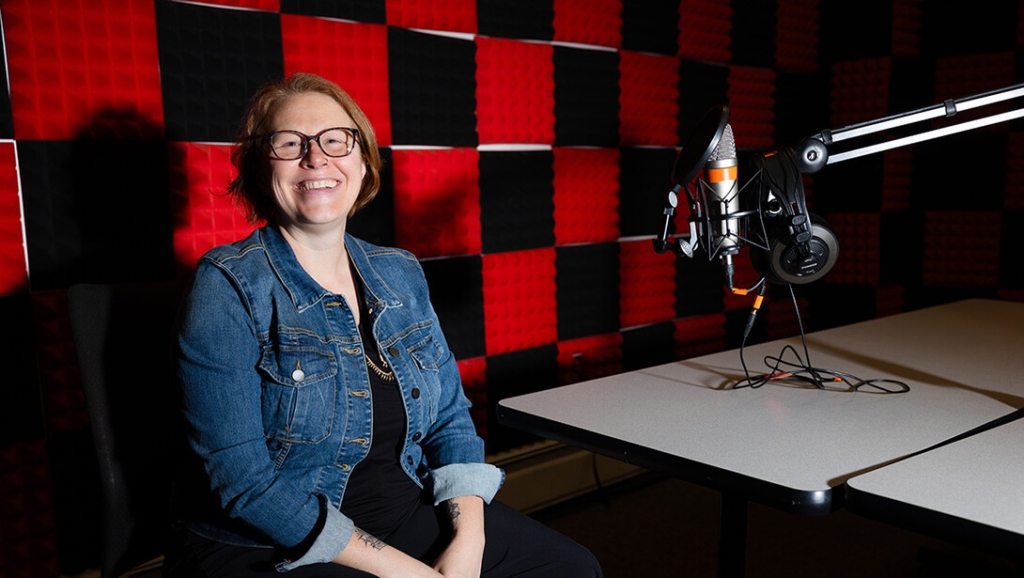
Research examines the good, bad and ugly of true crime media
Who: Kelli Boling, assistant professor of advertising
What: Boling published new research examining the effects of true crime media on the friends and families of crime victims. The research, published as two articles in Mass Communication and Society and Crime, Media, Culture, is the result of 20 extensive interviews with co-victims who witnessed a loved one’s story portrayed through true crime productions. Boling and co-author Danielle Slakoff of California State University, Sacramento found that co-victims often balance their feelings of lost privacy and autonomy with their hope that prolonged coverage of criminal cases will lead to justice for the victims. Co-victims had five main concerns regarding their experiences with true crime media: inaccuracies; sensationalism of tragedy; loss of privacy; uncomfortable interactions with true crime consumers; and lack of control in the production of stories. Notably, co-victims did not distinguish between any producers or consumers of true crime media — they felt all were harmful.
“They were very clear that only another co-victim would have the empathy and respect to tell a story and that anybody outside that lived experience could not do it justice,” Boling said. “Ethical true crime has to be victim and co-victim centered.”
Writer: Deann Gayman, University Communication and Marketing
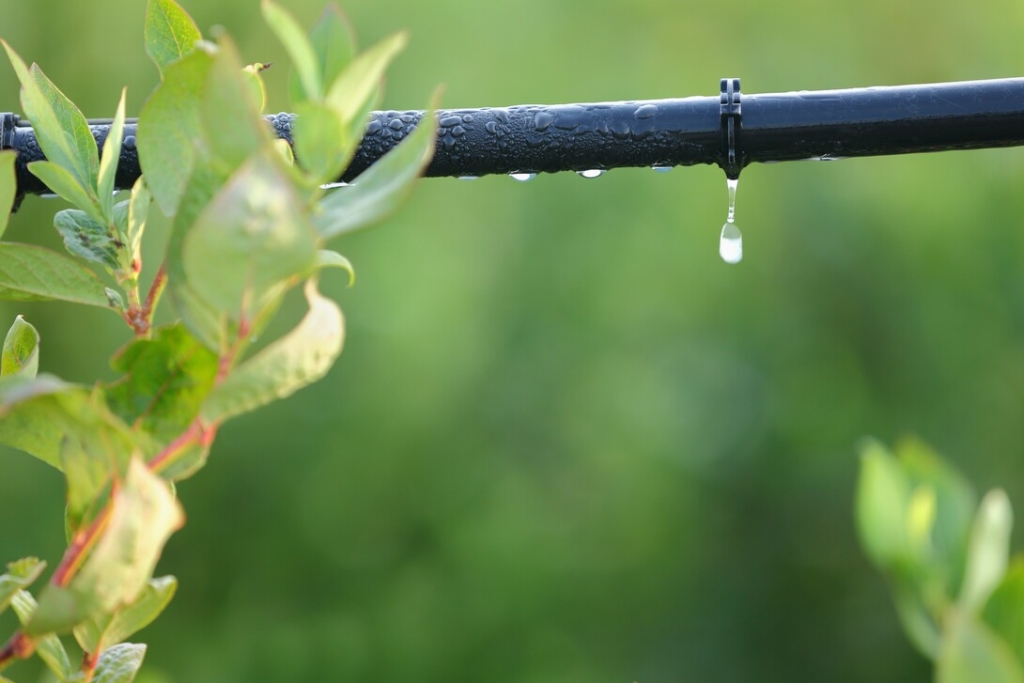
Nebraska-developed map highlights U.S. water rights systems, informs governance
Who: Daugherty Water for Food Global Institute; National Drought Mitigation Center; Department of Agricultural Economics
What: The three university entities collaborated to develop a new thematic map depicting primary water rights systems across the U.S. The innovative tool paints a clearer picture of the variability of surface water and groundwater rights systems, which are crucial for effective water management and policy development by researchers, policymakers and landowners. These systems provide legal boundaries for water management and are crucial in developing and evaluating policies and practices around water governance. The tool, available online, will inform future research and illustrate the relationship between water rights systems and decisions related to drought adaptation and other water governance strategies. The work was funded by the U.S. Department of Agriculture, Office of the Chief Economist.
Writer: Frances Hayes, Daugherty Water for Food Global Institute
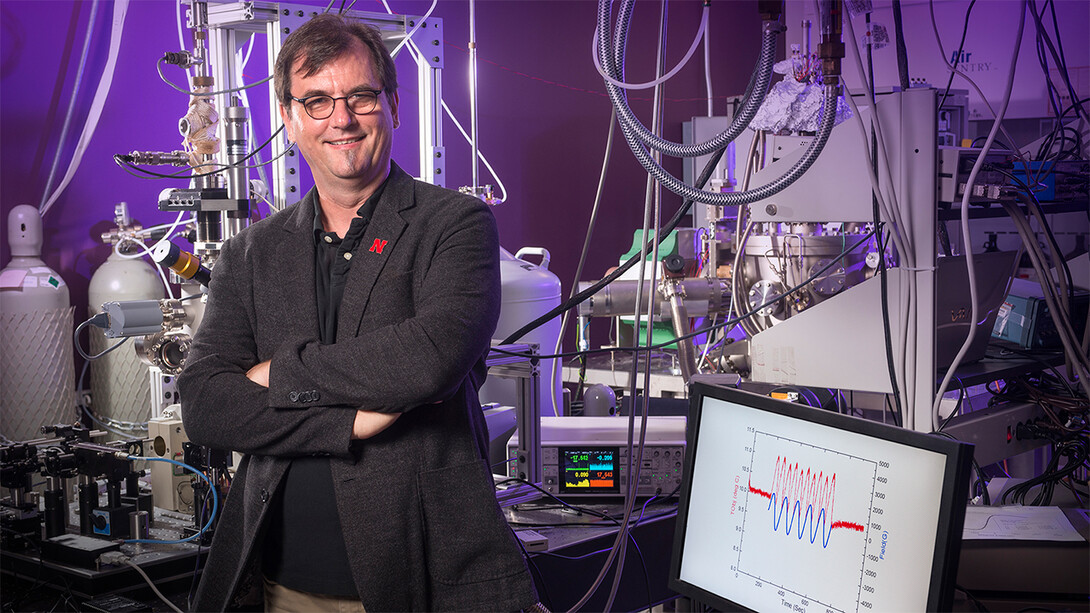
Nebraska’s EQUATE research connects to 2025 Nobel Prizes
Who: Christian Binek, Paula and D.B. Varner Professor of Physics; EQUATE collaboration
What: The Emergent Quantum Materials and Technologies collaboration – which includes physicists, chemists and engineers from across the University of Nebraska system – is conducting work that intersects with 2025 Nobel Prize-winning research. The National Science Foundation-funded EQUATE team conducts research aimed at discovering new properties of quantum materials and harnessing them for future quantum technologies. This year’s Nobel Prize in Physics recognized work on macroscopic quantum tunnelling and energy quantization in an electric circuit, which opened the door to development of quantum computers. One of EQUATE’s research teams is working on analog quantum emulation and development of types of qubits that could outperform today’s superconducting versions. The 2025 Nobel Prize in Chemistry honored work on metal-organic frameworks, which are also important to EQUATE researchers because they serve as robust qubits and they contain materials that can help control how qubits interact with each other.
“It’s exciting to see the topics we’re working on gain public attention,” Binek said.
Writer: Carole Allen, Nebraska’s Established Program to Stimulate Competitive Research





